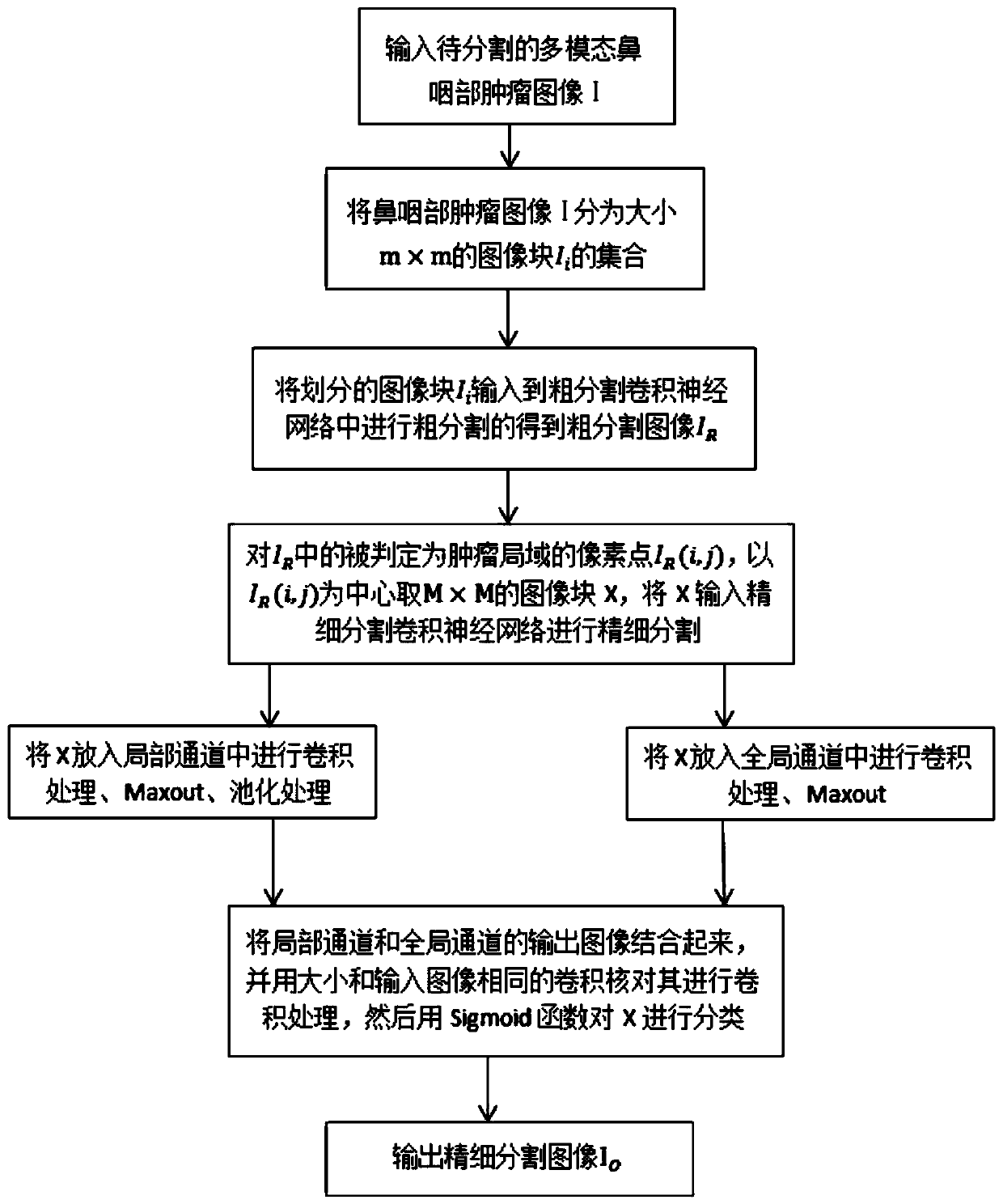A CNN-based joint segmentation method for multimodal nasopharyngeal tumors
A technology of joint segmentation and nasopharynx, applied in image analysis, biological neural network models, instruments, etc., can solve problems such as difficult to meet high-precision clinical needs, unsatisfactory research results, and few researches on image segmentation. Achieve the effects of shortening the segmentation time, simple structure, and improving segmentation accuracy
- Summary
- Abstract
- Description
- Claims
- Application Information
AI Technical Summary
Problems solved by technology
Method used
Image
Examples
Embodiment Construction
[0033] A detailed description will be given below in conjunction with the accompanying drawings.
[0034] In order to make the object, technical solution and advantages of the present invention clearer, the present invention will be further described in detail below in combination with specific embodiments and with reference to the accompanying drawings. It should be understood that these descriptions are exemplary only, and are not intended to limit the scope of the present invention. Also, in the following description, descriptions of well-known structures and techniques are omitted to avoid unnecessarily obscuring the concept of the present invention.
[0035] figure 1 It is an algorithm flow chart of the segmentation method of the present invention. Combine now figure 1 A CNN-based multimodal nasopharyngeal tumor joint segmentation method proposed by the present invention is described in detail. The segmentation method of the present invention includes:
[0036] Step 1...
PUM
 Login to View More
Login to View More Abstract
Description
Claims
Application Information
 Login to View More
Login to View More - R&D
- Intellectual Property
- Life Sciences
- Materials
- Tech Scout
- Unparalleled Data Quality
- Higher Quality Content
- 60% Fewer Hallucinations
Browse by: Latest US Patents, China's latest patents, Technical Efficacy Thesaurus, Application Domain, Technology Topic, Popular Technical Reports.
© 2025 PatSnap. All rights reserved.Legal|Privacy policy|Modern Slavery Act Transparency Statement|Sitemap|About US| Contact US: help@patsnap.com



